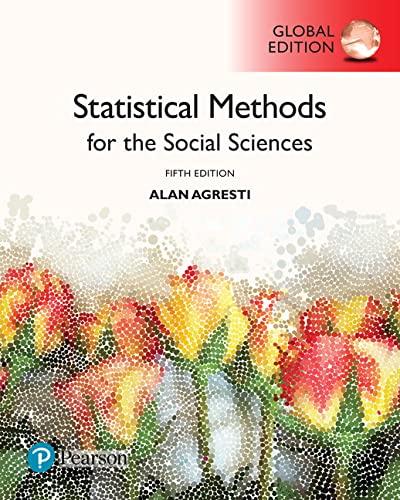The variables y = annual income (thousands of dollars), x1 = number of years of education, and
Question:
The variables y = annual income (thousands of dollars), x1 = number of years of education, and x2 =
number of years of experience in job are measured for all the employees having city-funded jobs, in Knoxville, Tennessee. The following prediction equations and correlations apply:
i. ˆy = 10 + 1.0x1, r = 0.30.
ii. ˆy = 14 + 0.4x2, r = 0.60.
The correlation is −0.40 between x1 and x2. Which of the following statements are true?
(a) The strongest sample association is between y and x2.
(b) The weakest sample association is between x1 and x2.
(c) The prediction equation using x2 to predict x1 has negative slope.
(d) A standard deviation increase in education corresponds to a predicted increase of 0.3 standard deviations in income.
(e) There is a 30% reduction in error in using education, instead of ¯y, to predict income.
(f) Each additional year on the job corresponds to a $400 increase in predicted income.
(g) When x1 is the predictor of y, the sum of squared residuals
(SSE) is larger than when x2 is the predictor of y.
(h) The predicted mean income for employees having 20 years of experience is $4000 higher than the predicted mean income for employees having 10 years of experience.
(i) If s = 8 for the model using x1 to predict y, then it is not unusual to observe an income of $70,000 for an employee who has 10 years of education.
(j) It is possible that sy = 12.0 and sx1
= 3.6.
(k) It is possible that ¯y = 20 and ¯x1 = 13.
Select the best response(s) in Exercises 9.59—9.61. (More than one response may be correct.)
Step by Step Answer:

Statistical Methods For The Social Sciences
ISBN: 9781292220314
5th Global Edition
Authors: Alan Agresti






